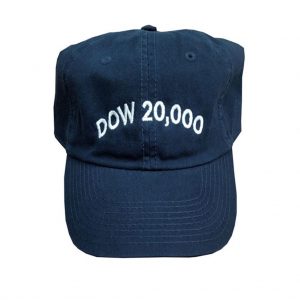You may have partied like it was 1999, but the big celebration was in 2000. Your shopping cart is consistently full of products with prices ending in ".99". Your last salary negotiation involved numbers rounded off to the nearest $5,000 or $10,000.
All of these examples aren't coincidence - it turns out that there is a round number bias in humans. Closely related to that, pricing strategies known as psychological pricing or charm pricing have evolved to exploit your penchant for round numbers.
Round Number Bias: Your Brain Likes '0's
Humans have a round number bias. It's been passed onto us by socialization.
Think about it - picking a Base-10 number system was an arbitrary choice. It was probably also an anthropomorphic choice based on the number of fingers the average (well, modal) human possesses.
However, something in our upbringing – or a combination of numbers and an evolved trait – means we're just more comfortable with numbers ending with zero. https://www.youtube.com/embed/m3JVr5HoeoA
And even though the general usage of credit and debit cards have made Mr. Seinfeld's predicament above an anachronism, our round number bias shows up in many places:
- Real Estate Listings: even though pricing at an exact amount leaves money on the table
- Salary Negotiations: even though a precise salary might mean more income
- Dating Profiles: where men often round their heights up to 6'0"
- Athletics: where marathon runners successfully beat 5 minute marks or baseball players avoid at-bats when above a .300 batting average
- Social Media: where sites such as Twitter have special events when you cross round boundaries such as 1,000 followers (Follow us on Twitter!)

How Round Number Bias Can be Detrimental
DQYDJ is at its heart a finance site - and your round number bias can put you at a disadvantage to a more number agnostic person. (Especially in finance.)
Remember Dow 36,000? Did you get your Dow 18,000 or Dow 20,000 hat?
As in other areas of your life, your round number bias shows up when you're investing. Whether that means you're 'waiting for a stock to get back to $30', or celebrating your portfolio crossing $1,000,000, you'll see it come up again and again.
Examples of Round Number Bias in Finance
This isn't just a theoretical point.
- Israeli IPOs were more likely to be priced at a round number, although there is no law which says valuations should lead to a round number.
- A study teased out a bias towards round number purchases in Chinese and American small cap stocks.
- In the wheat market, wheat producers showed an exploitable bias to price wheat at round numbers.
- $10 and $5 are psychologically important share prices. Indices themselves have round number criteria to join - for example, the NYSE requires a minimum $4 share price.
- Investors are more prone to buy or sell based on the last digit of a stock's price.
- Human investors drive prices towards even endings on common time intervals.
- Analyst earnings estimates cluster at round numbers.
Whether detrimentally holding on for a round number that will never come, or selling early because you're "back to even" or "at a round number", you hurt your portfolio's returns with your round number bias.
Remember: there's no reason you can't sell if the last two digits are 23. Also note: computers don't care about round numbers.
Psychological Pricing and Charm Pricing: Ending with 99 Cents
Most of the goods you purchase are priced not ending with "00 cents". Whether 95 cents , 97 cents, 99 cents or something else, prices for everything from gas to bed-sheets fall into this strange pattern.
It's unclear when, exactly, this practice started.
Cecil Adams of The Straight Dope found some evidence for the 1880s, but prices really started the 'slightly less' fad in the 1920s. Whenever it started, charm pricing or psychological pricing hasn't gone away - from goods to services, it's the dominant practice.
How dominant? A 1997 survey found 60% of prices ended with '9' (and another 30% with '5')!
A Left Side Bias for Charm Pricing
So why are we vulnerable to psychological pricing? Why does "$20.00" appear so different than "$19.99" to us?
Well, we don't exactly know... but there are theories.
- Because we read from left to right, it's possible that we overweight digits on the left of the price
- Perhaps we're attracted to prices ending in odd numbers.
- Perhaps because there is so much information to process we only recall the most significant digit.
- In a reversal of the round number bias, we think we're getting a good deal when we see a non-rounded number.
- ...Or maybe we just love getting pennies back in change.
Whatever the cause, charm pricing isn't going anywhere. Throwing more machine learning and experience at pricing models has only validated the practice.
Beware Your Brain's Biases...
You weren't born knowing our number system, but your reaction to it has pretty drastic effects on your day to day life.
A price ending with '9' or '7' sways your thoughts on spending by short circuiting your round number bias. And, funnily enough, even while being aware of this phenomenon we're all susceptible.
There isn't really a shortcut for this one.
It's best to be aware of subtle thoughts creeping in:
- Are you holding a bad investment waiting for a round number?
- Should you look at that $9.99 item as $10?
- Should you counter with a $350,000 offer on that house, or $348,272?
Just being aware of this bias means you might have the opportunity to take advantage of it at some point. And check out our rounding number calculator and flex your left-side bias.
